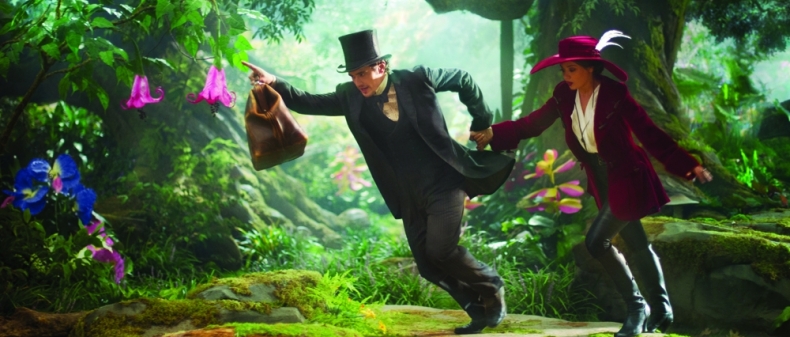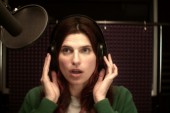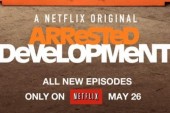
With all due respect to Citizen Kane and Vertigo–the two titans duelling for status as the Greatest Movie of All Timeâ„¢ according to the Sight & Sound critics’ poll–neither film has had as great a cultural impact as The Wizard of Oz. While you can get through life quite easily without ever seeing Kane or Vertigo, you pretty much have to see Oz at some point. (According to the Library of Congress, it’s the most-watched motion picture in history.) And even those rare individuals who somehow fail to see it can readily reference its component parts: “Over the Rainbow,” “We’re not in Kansas anymore,” the ruby slippers, the yellow brick road, the wicked witch, “I’ll get you my pretty,” etc. The only film to come anywhere close to Oz in impact is Star Wars, which is, of course, largely just a sci-fi update, with Tatooine standing in for Kansas, and C-3PO, R2-D2, and Chewbacca standing in for the Scarecrow, Tin Woodman, and Cowardly Lion.
But Oz isn’t just a template for future blockbusters or a resource for handy conversational metaphors–it’s the essential modern allegory. To put it in pretentious college-lit-paper terms: Dorothy’s journey from Kansas to the Emerald City mirrors the human migration from rural areas to cities over the past two centuries or so, and her eventual return to Kansas satisfies the collective longing to go back to simpler ways of life. (Not everyone appreciates that last aspect of the film: John Waters, along with many others, has opined that Dorothy was a chump to leave Oz for depressing, sepia-tinted Kansas.) That’s just one reading of it, though; there are plenty of other equally legit interpretations. Ultimately, the movie’s true greatness lies not in any one interpretation, but in its endless allusiveness. It’s a hugely fertile fantasy.
If there’s a drawback to Oz‘s greatness, it’s that it has become almost sacrosanct, to the point that fans and critics lambast pretty much every effort to revisit it. In 1985, the great film editor and sound designer Walter Murch made his one and only foray into directing with an official sequel, Return to Oz, and it was both a critical and financial failure. “Too dark,” everybody said. “Not enough singing or laughs.” But me, I loved Return to Oz (I saw it when I was ten), and I continue to love it now. Though no cultural touchstone, it’s much closer in spirit to the original L. Frank Baum books, which could be surprisingly grim (as well as Grimm). The movie is about Dorothy (a young, not-yet-demonic-looking Fairuza Balk) going back to Oz to find the yellow brick road in ruins, the inhabitants of the Emerald City turned to stone, and the evil Nome King running things from his mountain lair. Whereas The Wizard of Oz has the look and feel of a vaudeville review (it’s more a tribute to show biz than to Baum’s source material), Return to Oz is like a bedtime picture book, alternating between soft, dreamy images and moments of pure, shivery terror. Not only is it one of the most underrated of children’s films, it was one of the earliest cinematic victims of overprotective modern parenting, the kind that insists children be shielded from anything dark or scary.
I bring up Return to Oz to make a point: that I’m not remotely averse to further Oz films, nor inclined to use the original as a bludgeon against one. But Disney’s new Oz prequel, Oz the Great and Powerful, deserves a bludgeoning, and a much fiercer one than I can provide. Made for a reported $200 million (plus another $100 million for promotion), it’s a monumentally unimaginative movie, dedicated exclusively to the soul-shrivelling wonders of CGI. The director, Sam Raimi (The Evil Dead, the first three Spider-Man films), has always tended to forfeit some personal style when working on big Hollywood productions, but this time he completely capitulates: the movie is a big, corporate mega-production through and through, and all too clearly modelled on Tim Burton’s massively successful Alice in Wonderland. It also seems to want to be a kiddie Avatar, with way too much screen time given over to Oz’s Day-Glo flora and fauna. The script, written by Mitchell Kapner and polished (how?) by playwright David Lindsay-Abaire, is strictly an afterthought, and embarrassingly perfunctory throughout. This is the kind of movie where, after a time-filler chase, the characters are made to say things like, “Phew, that was close!” or “Nice work, we lost ’em!” Rest assured, no one will be quoting from this film anytime soon.
As for the actors–James Franco as a ne’er-do-well magician who’ll become the Wizard of Oz; Zach Braff (in voiceover) as the magician’s wisecracking winged-monkey sidekick; and Mila Kunis, Rachel Weisz, and Michelle Williams as beautiful witches competing for the magician’s attentions–they’re all cast adrift on a green-screen sea. It doesn’t help that Franco, who has to carry the movie and is onscreen constantly, is perversely miscast. He’s supposed to be a smooth flimflam artist, wowing the denizens of Kansas and then Oz with his theatrical flair, but he’s much too unassertive, too noncommittal, a screen presence; his laid-back, smile-and-squint approach makes it seem as if he wandered into Oz from a head-shop in Hollywood. (Mila Kunis, meanwhile, seems to have wandered into Oz from a mall in Malibu.)
When MGM made The Wizard of Oz, the studio heads jettisoned the word “Wonderful” from Baum’s original title, probably because they knew audiences wouldn’t need to be sold on the film’s wonderfulness. Oz the Great and Powerful, meanwhile, piles on the adjectives, and still we remain unconvinced. Not only is there no greatness or power here, there’s no wonderment either, which is maybe its biggest failure. Really, with massive CGI spectacles like this, what can there ever be to wonder about? Ask a kid afterwards how it was all done and they’ll tell you: “Duh, it was done with computers!” Then they’ll return to their iPad Minis, the movie already forgotten. With luck, they’ll look up YouTube clips of The Wizard of Oz.
____
Scott MacDonald writes about cinema for Toronto Standard. You can follow him on Twitter at @scottpmac. He just started tweeting, so be gentle with him.
For more, follow us on Twitter @TorontoStandard and subscribe to our newsletter.














